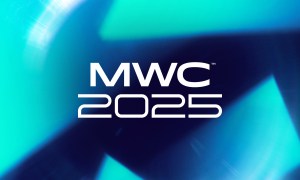
Nokia’s back. At the Finnish company’s analyst and press event at Mobile World Congress on Sunday, it announced a road map that places particular emphasis on high-speed wireless, consumer smartphones, and professional-grade virtual reality equipment.
Company President Rajeev Suri said Nokia’s biggest growth potential lies in its ability to “expand, build, and create.” He touted its strength in licensing, highlighting its Ozo virtual reality platform and close working relationship with smartphone maker HMD Global. “Nokia is a fundamentally different company than it was one year ago,” Suri said.
Suri announced that Nokia would partner with Verizon and Intel to deploy 5G-enabled “next-generation video and entertainment services.” It’s set to launch in Dallas later this year, and expand to other U.S. markets by the end of 2017.

The U.S.-based 5G build-out dovetails with the company’s broader network efforts. Xioami has contracted Nokia to build a high-speed fiber-optic network that will interconnect the Chinese company’s data network, and it’s working with a Portuguese railway on a failback network. It’s also recruiting General Electric and Qualcomm to deploy a private LTE network “customized for the industrial Internet of Things.”
When it comes to devices, Nokia said it’s well-positioned to make an impact in several categories.
Suri is confident in HMD Global’s ability to produce “compelling” smartphones with marketing punch. “It’s important that we spend our time looking for a partner. I think that the team is […] a real team that’s good at what they do,” he said. “[They have] distribution, reach, channel, and management [that’s] ex-Nokia [employees]. With all these things coming together, it allows us to license these brands to our players.”
And Suri believes that Withings, a France-based health and fitness firm that Nokia acquired for $190 million in April 2016, is ripe to carve out a healthy slice of the burgeoning wellness industry. “We have said consistently that digital health was an area of strategic interest to Nokia, and we are now taking concrete action to tap the opportunity in this large and important market,” Suri, said. “Every consumer device you see will have the Nokia human touch that plays back to our values and culture as a company. They’re beautiful devices that are plug-and-play.”
Suri said Nokia’s virtual reality efforts will also move it forward. The company announced the OZO VR camera in 2015, and in 2016 launched a major hardware upgrade, revealed a new software developer kit, and collaborated with content creators including Disney and Chinese entertainment platform Youku. “We’re taking on virtual reality as one of our core businesses, so Ozo is the first step in many, many steps toward a global ecosystem play in virtual reality,” said Nokia Technologies President Ramzi Haidamus. “We are the only camera today that is purpose-built for VR at this professional level.”

Nokia’s multipronged strategy is already paying dividends, Suri said. Revenues for 2016 reached 23.9 billion, nearly double the company’s 2015 revenue of 12.5 billion.
“We’re leveraging all the assets of our remarkable portfolio,” Suri said